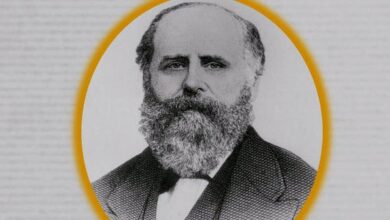U.S. Workers Just Set a 401(k) Record. See How You Compare

Record High 401(k) Savings Rates in the U.S.
Workers in the U.S. are socking away a record share of their earnings for retirement, new data reveals.
The average 401(k) savings rate has reached an all-time high of 14.3%, according to a retirement trends report released Wednesday by the financial firm Fidelity. The report, which analyzed retirement account balances over the first three months of 2025, found that both worker contributions and employer-matching contributions have reached the highest levels to date.
“It’s encouraging to see people take a continuous savings approach which focuses on their long-term retirement goals,” Sharon Brovelli, president of workplace investing at Fidelity, said in a news release. “This approach will help individuals weather any type of market turmoil and stay on track.”
Financial advisors often recommend workers save 15% of their annual earnings to fund a comfortable retirement, and 14.3% is the closest workers have gotten to that recommendation, on average.
Despite saving a bigger portion of their incomes, workers saw their account balances dip over the first few months of 2025. By the end of March, average 401(k) balances had ticked down to $127,100, marking a $4,600 decrease from December.
Those falling 401(k) balances were largely due to stock market jitters around President Donald Trump’s sweeping tariff announcement in April, which ultimately sent markets plummeting. The tariff-inspired market turmoil wiped away approximately 25,000 so-called 401(k) millionaires, bringing the total number of investors with at least $1 million in their 401(k)s to 512,000.
The S&P 500 index, for instance, fell as much as 15% from the start of the year. Since then, those losses have been reversed, and the index is now up slightly by 1.7%.
That suggests 401(k) balances have likely recovered, too (though the Fidelity report only goes through March).
Fidelity’s analysis is based on more than 24.4 million retirement accounts. According to the Labor Department, 70% of the private workforce (about 95 million workers) has access to a 401(k) or similar retirement-savings plan.
401(k) savings: How do you compare?
As of March, the average 401(k) balance was $127,100. But retirement savings trends vary greatly by age.
Here’s a look at the typical 401(k) balance and savings rate for members of each generation:
- Gen Z (born 1997-2012) has saved $13,900, with a savings rate of 11.2%
- Millennials (born 1981-1996) have saved $66,800, with a 13.5% savings rate
- Gen X (born 1965-1980) has saved $187,400 with a savings rate of 15.4%
- Baby boomers (born 1946-1964) have saved $239,600 with a savings rate of 17.2%
While Gen Z workers — predictably — had the lowest account balances, they were the most likely group to have increased their contribution rates to start the year. They were also the least likely to have taken out a 401(k) loan.
Gen X workers were the most likely to have an outstanding 401(k) loan, with 1 in 4 Gen Xers tapping their retirement accounts in the first few months of the year.
More from Money:
This 401(k) Change Could Help 3 Million More Americans Afford Retirement
You Might Be Overestimating How Much Money You Need to Save for Retirement
It Might Be Time to Ditch These Two Retirement ‘Rules’





